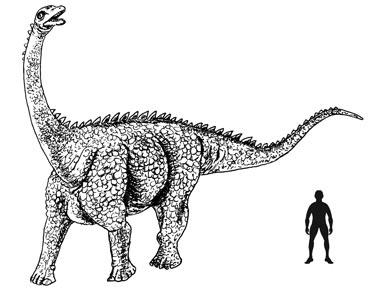Researchers Refute Claims about Distinct and Separate Mega Faunas of North America
The debate about dinosaur ethnicity in North America during the Late Cretaceous continues.
During the Late Cretaceous, North America was effectively split in two by a shallow sea. The size of this sea fluctuated during the Campanian and Maastrichtian faunal stages. At times it stretched northwards from the Gulf of Mexico extending all the way to the Arctic Ocean, this seaway is known as the Western Interior Seaway, it persisted until the early stages of the Tertiary, however, during the Cenozoic the sea levels gradually began to fall and the land was slowly exposed again. By approximately 45 million years ago, much of the continent of North America we know today had been reclaimed as land, with only a small, shallow area of sea left remaining covering the south-west United States. This sea is known by geologists as the Cannonball Sea.
Dinosaur Ethnicity
Some palaeontologists, as they review the dinosaur fossils found on the eastern side of the Western Interior Seaway, that is fossils of dinosaurs found in places such as Alberta in Canada, right down to Texas and Mexico in the south, believe that there were distinct and separate dinosaur faunas. It seems that some types of dinosaur lived in particular parts of North America, with other dinosaurs, similar genera filling the same environmental niches in other parts of the continent. This theory – a sort of dinosaur ethnicity was touched upon in an earlier article when we reported on the discovery of a new Pachycephalosaur in Texas – Texacephale langstoni.
To read more about this recent discovery: Hard-headed dinosaur, a new genus of Pachycephalosaur from Texas.
In addition, the discovery of this pachycephalosaur fossil in Texas seems to support a theory put forward by many North American scientists that the dinosaur fauna of Canada and the northern USA was very different from those dinosaurs found in Late Cretaceous southern USA. In interpreting the fossil evidence, a number of scientists have concluded that there was a sort of ethnicity amongst dinosaurs, with northern genera distinct from their southern neighbours.
Commentating on this, lead author of the research paper on the new Texas pachycephalosaur; Nicholas Longrich said:
“Instead of roaming across the North American continent, we see pockets of different dinosaurs that are pretty isolated from each other. Every time we get good fossils from Texas, they end up looking very different from those to the north.”
However, this concept of ethnicity is being challenged by a group of Canada scientists who have just published a paper refuting the dinosaur ethnicity theory in the scientific journal “Proceedings of the National Academy of Science”. Those scientists who support the distinct fauna theory of North America suggest that some horned dinosaurs such as Triceratops lived in the interior of the west (ironically close to the coast of the Western Interior Seaway), whilst closely related ceratopsians such as Torosaurus were to be found in the south.
Duck-billed dinosaurs dominated in the northern latitudes but one of the last North American sauropods the 20-metre-long Alamosaurus, inhabited only the southern part of the United States. Geological evidence seems to show that there were no physical boundaries to prevent dinosaur migration and a mixing of different faunas. The climate does not seem to be a factor, as the Late Cretaceous climate of this part of the world was relatively uniform, warm and humid.
A Scale Drawing of the North American Late Cretaceous Titanosaur Alamosaurus

Scale drawing of Alamosaurus. A titanosaur from the USA, its ancestors migrated into North America from South America. Picture credit: Everything Dinosaur.
Picture credit: Everything Dinosaur
Challenging the Established Order
However, palaeontologists Matthew Vavrek and Hans Larrsson of McGill University (Montreal) have challenged this belief, stating that the ethnicity that is seen in the fossil record is a result of the paucity of the fossil material of dinosaurs found to date. They conclude that because fossils survive and are found in a totally random way, and because some sites have been studied more extensively than others our understanding of the mega-fauna is skewed in favour of seeing distinct groups of animals in the fossil record.
Extrapolating from samples found at four areas that each contained large numbers of fossils, their analysis found no evidence of distinct ranges. Instead, they found evidence of a single dinosaur community in the warm, uniform climate of the area.
We suspect the debate will rumble on and a couple of Everything Dinosaur team members are trying to put together a Key Stage 3 (UK National Curriculum) study pack so that school children can weigh up the arguments for themselves and see what they can make of the evidence.
Visit Everything Dinosaur’s award-winning website: Everything Dinosaur.






Leave A Comment